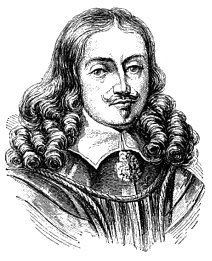Noble family House of Beaufort Mother Anne Russell | Name Edward 2nd | |
 | ||
Spouse(s) Elizabeth DormerMargaret O'Brien Died April 3, 1667, Greater London, United Kingdom Parents Henry Somerset, 1st Marquess of Worcester Children Henry Somerset, 1st Duke of Beaufort, Lady Anne Somerset Grandchildren Charles Somerset, Marquess of Worcester, Henry Howard, 7th Duke of Norfolk Grandparents Edward Somerset, 4th Earl of Worcester, Elizabeth Somerset, Countess of Worcester Similar People Edward Somerset - 4th Earl o, Thomas Savery, John Beaufort - 1st Earl of | ||
Edward Somerset, 2nd Marquess of Worcester (9 March 1602 or 9 March 1603 – 3 April 1667), styled Lord Herbert of Raglan from 1628–1644, was an English nobleman involved in royalist politics, and an inventor.
Contents
While Earl of Glamorgan, he was sent by Charles I to negotiate a peace treaty and alliance with the leadership of the Catholic Irish Confederacy. He enjoyed some success, but the agreement quickly broke down. He then joined the Confederates, and was appointed the commander of their Munster Army.
In 1655 he published The Century of Inventions, detailing more than 100 inventions, including a device that would have been one of the earliest steam engines.
Life
Edward Somerset was brought up as a Roman Catholic in Monmouthshire. He graduated from Cambridge University, England, in 1627 with a Master of Arts (MA) degree. In his day he was one of the richest lords in England, funding his experiments, later self-funding his military endeavours, and sending large amounts of money to King Charles I during the English Civil War. He was a Cavalier who supported the King in Wales, where he raised a regiment of horse for him. His campaigning in the West of England and in Wales, however, did not go well. After a month with his force of over 2,000 troops encamped at Highnam, outside Gloucester, in March 1643 Herbert left them and travelled to meet the king at Oxford. In his absence the entire force surrendered without any exchange of fire, earning it the title "The Mushroom Army" (they appeared and disappeared very quickly). He was rewarded in 1644, however, with a peerage, being created Earl of Glamorgan and Baron Beaufort of Caldecote. Due to irregularities in the letters patent, these titles were not recognised after the Restoration.
Sent to Ireland, he made a false move in concluding a treaty, in great secrecy, on behalf of Charles that was considered to concede too much to the Catholics there; he himself was a Catholic. In extricating himself from that position, he became a close ally of Giovanni Battista Rinuccini, and a potential replacement for James Butler, 1st Duke of Ormonde as royalist leader. His plans to bring Irish troops over to England were overtaken by events, and he left for France with George Leyburn. He succeeded his father as Marquess of Worcester in 1646.
He was formally banished in 1649, but after four years in Paris returned to England in 1653. He was discovered, charged with high treason and sent to the Tower of London; he was treated leniently by the Council of State, and released on bail in 1654. That year he took up again his interest in engineering and inventions, leasing a house at Vauxhall where his Dutch or German technician Kaspar Kalthoff could work. After this he largely avoided politics, and did not press his claims to the various other titles of nobility.
Works
In 1655 he authored a book which consisted of textual descriptions of 100 separate inventions. It was eventually printed in 1663 and included a device described as his "Water-commanding Engine". Constructed from the barrel of a cannon, it was an obvious prototype design for what would later become the steam engine, and clearly anticipated the power and applications of that machine.
In 1663 Samuel Sorbière visited Edward's Vauxhall workshop and saw and described the "hydraulic machine which the Marquis of Worcester has invented." It was designed for purposes of irrigation, and would "raise to the height of forty feet, by the strength of one man and in the space of one minute of time, four large buckets of water." Cosimo de' Medici, Duke of Tuscany, visited it in 1669, when a similar description was given. Robert Hooke, however, described it as "one of the perpetual motion fallacies."
Edward suggested that when he died, a model of his engine should be buried with him. Almost 200 years later, in 1861, this prompted Victorian collector Bennet Woodcroft to mount an expedition, on behalf of the London Science Museum, to the vault of Raglan church, to try to find a model of the invention in Somerset's tomb. Despite opening the coffin lid and searching thoroughly, no model was found. Woodcroft did, however, return with one of Edward's fingernails.
Family
He was the son of Henry Somerset, 1st Marquess of Worcester and his wife Anne Russell. In 1628, he married Elizabeth Dormer (d. 31 May 1635), sister of Robert Dormer, 1st Earl of Carnarvon, by whom he had one son and two daughters:
In 1639, after Elizabeth's death, Lord Herbert married Margaret O'Brien (d. 26 July 1681), daughter of Henry O'Brien, 5th Earl of Thomond. They had two daughters:
